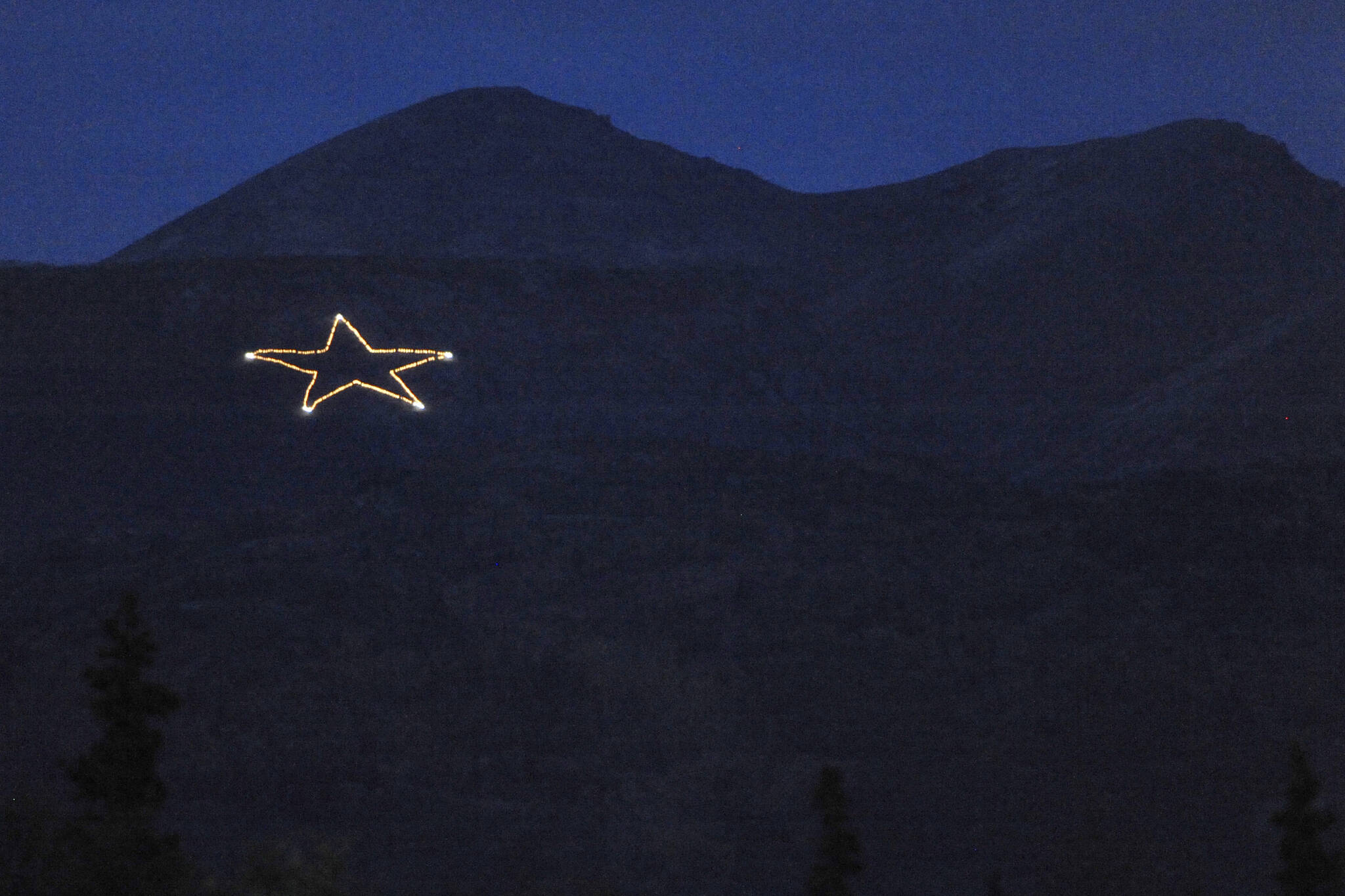ANCHORAGE — A holiday tradition in Alaska’s largest city for more than 60 years got off to a dim start this year.
A 300-foot wide, brightly illuminated star situated high above Anchorage in the Chugach Mountains is traditionally lit the day after Thanksgiving. However, when military crews arrived on Friday to light the star, only about half of the 350 or so bulbs worked.
Airmen worked for three days in extreme conditions and cold temperatures before finding the cause of the problem Tuesday.
A small avalanche rained down rocks and snow on the star, which is situated at about the 4,000-foot level of Mount Gordon Lyon, Joint Base Elmendorf-Richardson spokesperson Erin Eaton told The Associated Press.
Broken bulbs had to be replaced and connections repaired, Eaton said.
“They made the necessary repairs, and now it’s operational,” she said. The star was expected to be lit on Tuesday evening.
Airmen from the 773rd Civil Engineer Squadron Electrical Shop had to harness up as a safety precaution to conduct repairs in falling snow and steep terrain, anywhere from 25- to 45-degree angles, she said.
The star is located near a former U.S. Army missile installation in the Chugach range, on the city’s eastern edge. To reach the star, crews have to drive a truck up a road, offload tracked vehicles at a side road and travel several more miles before they reach the star, Eaton said.
“Even during decent road conditions, it can be kind of hairy,” Eaton told the Anchorage Daily News.
Until the avalanche damage was discovered, the cause of the star’s outage was a mystery.
Crews last summer repaired damage from the previous winter and replaced all the lightbulbs, she said.
The star is lit every Sept. 11 to observe the anniversary of the 2001 terrorist attacks. The star was functioning well just two months ago, Eaton said.
“That’s kind of their opportunity to test for any issues and there were no issues at that time,” she said.
After the star is lit each year, it remains illuminated until the last musher in the Iditarod Trail Sled Dog Race crosses the finish line about 1,000 miles away in Nome. The world’s most famous sled dog race has its ceremonial start in Anchorage the first Saturday in March with the competitive start a day later about 50 miles (80 kilometers) north of Alaska’s largest city.
It’s believed this is the first time the star hasn’t been fully lit on time, Eaton said.



